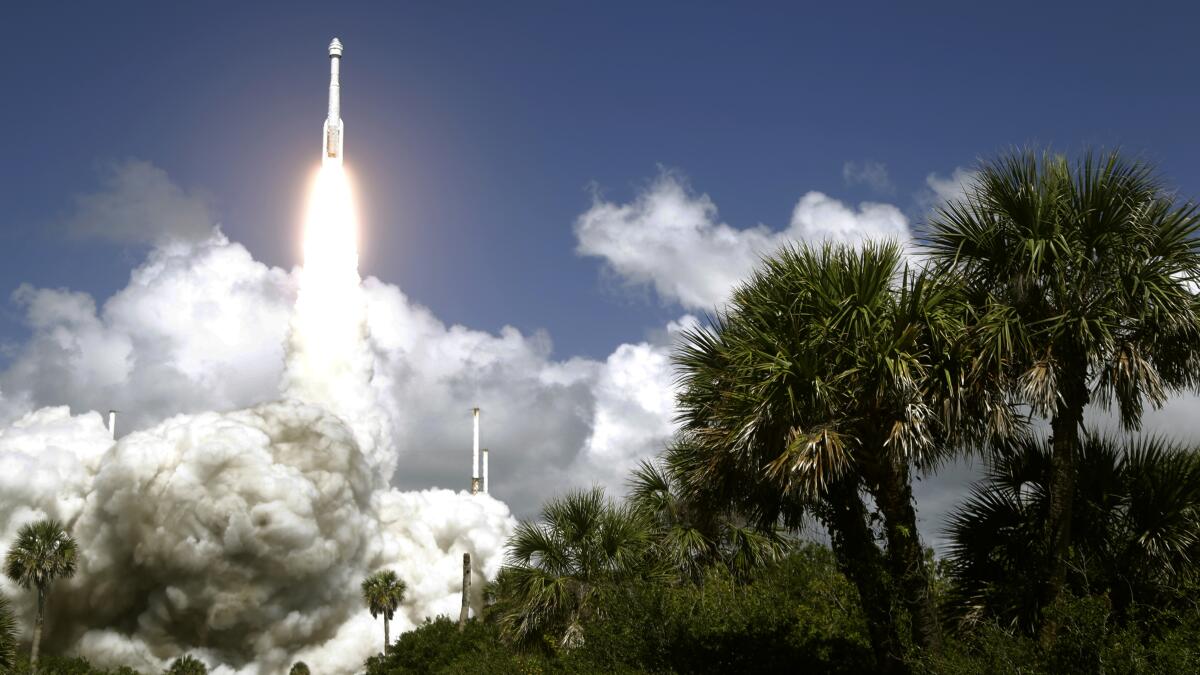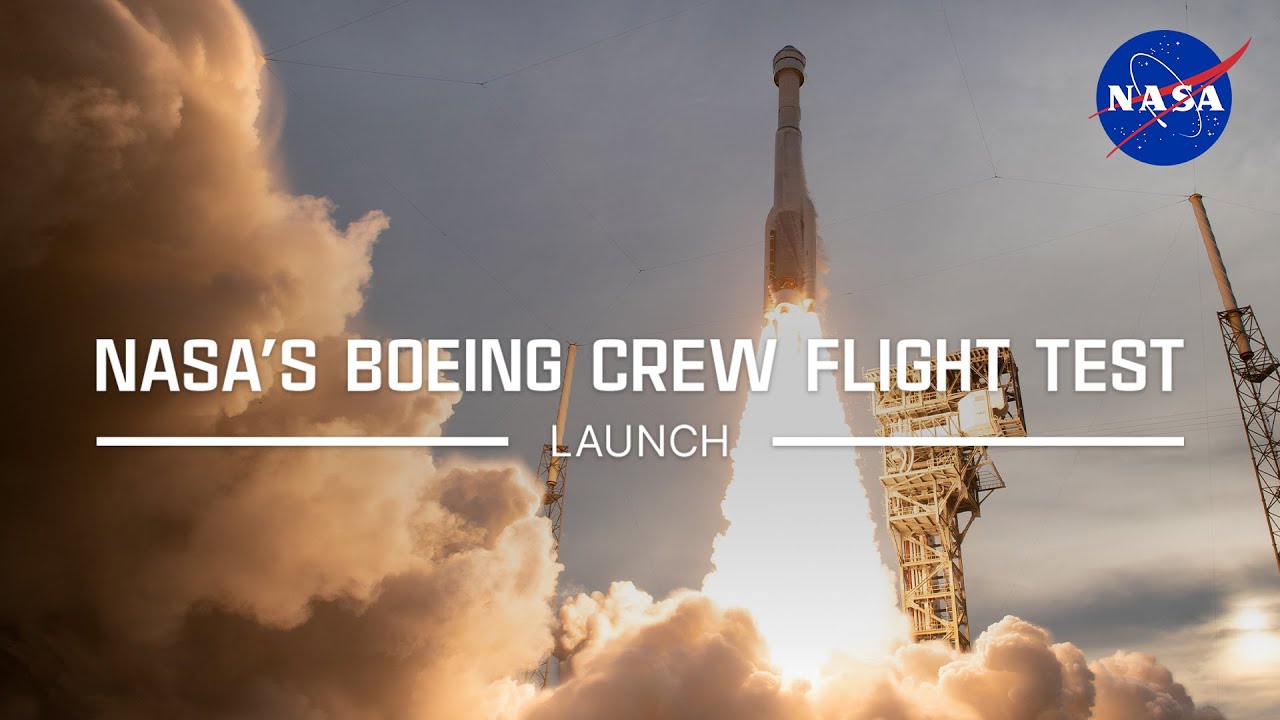NASA and Boeing Starliner Launch Details: Nasa, Boeing Starliner Launch

Nasa, boeing starliner launch – The highly anticipated launch of the NASA and Boeing Starliner spacecraft marked a significant milestone in the realm of space exploration. The mission, meticulously planned and executed, aimed to pave the way for future crewed flights to the International Space Station (ISS) and beyond.
The recent NASA and Boeing Starliner launch marked a significant milestone in space exploration. The mission’s success is a testament to the collaboration between human ingenuity and advanced technology. As we look to the future of space travel, it’s important to remember the lessons learned from this launch and to continue to push the boundaries of human knowledge.
Master Indara, a renowned spiritual teacher, once said, “The greatest journey is the one that takes you to the depths of your own being.” This sentiment is echoed in the pursuit of space exploration, as we strive to uncover the mysteries of the universe and our place within it.
The NASA and Boeing Starliner launch is a reminder that anything is possible when we dare to dream and to persevere.
The launch, scheduled for May 19, 2022, was meticulously orchestrated. The Starliner spacecraft, perched atop a United Launch Alliance Atlas V rocket, embarked on its journey from the Kennedy Space Center in Florida. The countdown commenced with a series of critical checks and procedures, ensuring the spacecraft’s readiness for its historic voyage.
The upcoming launch of NASA’s Boeing Starliner spacecraft has captivated the world. Meanwhile, in the realm of entertainment, the cast of the Acolyte Osha has been unveiled, promising an intriguing new series. As the countdown to the Starliner launch intensifies, it’s a testament to the human spirit’s unyielding pursuit of both scientific advancement and creative expression.
Roles and Responsibilities
NASA, as the lead agency for the mission, oversaw the overall planning, coordination, and management of the launch. The agency’s expertise in space exploration and mission control played a pivotal role in ensuring the success of the operation.
Boeing, the primary contractor for the Starliner spacecraft, was responsible for its design, development, and construction. The company’s extensive experience in aerospace engineering and manufacturing contributed to the spacecraft’s advanced capabilities and safety features.
The launch of NASA’s Boeing Starliner spacecraft was postponed yet again, a setback that has drawn comparisons to the recent disappointing reception of the film “Acolyte” on Rotten Tomatoes (https://charlottepittmannaf.bestiste.com/acolyte-rotten-tomatoes/). The Starliner, which is designed to transport astronauts to the International Space Station, has been plagued by technical issues that have delayed its launch multiple times.
Just as “Acolyte” failed to meet the high expectations of critics and audiences, the Starliner launch has become a symbol of frustration and missed opportunities.
Technical Aspects of the Starliner Spacecraft
The Boeing Starliner spacecraft is a reusable, crew-rated spacecraft designed to transport astronauts to and from low Earth orbit. It is equipped with a variety of advanced systems and features that enable it to perform complex missions in space.
The Starliner is composed of three main modules: the crew module, the service module, and the propulsion module. The crew module is the living quarters for the astronauts, and it is equipped with a variety of amenities, including a kitchen, a bathroom, and a sleeping area. The service module provides power, propulsion, and life support for the spacecraft, and it is equipped with a variety of sensors and instruments. The propulsion module provides the thrust needed to launch the spacecraft into orbit and to maneuver it in space.
Propulsion Systems
The Starliner is powered by a variety of propulsion systems, including:
- Launch Abort System (LAS): The LAS is a solid-fueled rocket system that is used to propel the crew module away from the launch vehicle in the event of an emergency.
- Orbital Maneuvering System (OMS): The OMS is a liquid-fueled rocket system that is used to maneuver the spacecraft in orbit.
- Reaction Control System (RCS): The RCS is a system of small thrusters that is used to control the spacecraft’s attitude and position in space.
Navigation Systems, Nasa, boeing starliner launch
The Starliner is equipped with a variety of navigation systems, including:
- Inertial Navigation System (INS): The INS is a system that uses gyroscopes and accelerometers to determine the spacecraft’s attitude and position in space.
- Global Positioning System (GPS): The GPS is a system that uses satellites to determine the spacecraft’s position in space.
- Star Tracker: The star tracker is a system that uses stars to determine the spacecraft’s attitude in space.
Life Support Systems
The Starliner is equipped with a variety of life support systems, including:
- Environmental Control and Life Support System (ECLSS): The ECLSS is a system that provides the crew with breathable air, water, and temperature control.
- Waste Management System: The waste management system is a system that collects and stores the crew’s waste.
- Medical System: The medical system is a system that provides the crew with medical care.
The Starliner spacecraft is a complex and sophisticated vehicle that is capable of performing a variety of missions in space. It is the result of years of research and development, and it represents the latest in spacecraft technology.
Launch Site and Mission Objectives

The launch site for the Starliner spacecraft was carefully selected based on several key factors, including proximity to the equator, favorable weather conditions, and infrastructure capabilities. The Kennedy Space Center in Florida was chosen as the launch site due to its long history of successful space launches and its well-established infrastructure.
The mission objectives of the Starliner launch are multifaceted, encompassing scientific research, technology demonstrations, and operational goals. The spacecraft will carry a variety of scientific instruments designed to study the Earth’s atmosphere, climate, and space environment. It will also test new technologies for future space missions, such as autonomous rendezvous and docking capabilities. Additionally, the mission will demonstrate the Starliner’s ability to safely transport astronauts to and from the International Space Station.
Scientific Research
- Study the Earth’s atmosphere and climate, including cloud formation, precipitation patterns, and the impact of human activities on the environment.
- Investigate the space environment, including radiation levels, magnetic fields, and the behavior of plasma in the Earth’s magnetosphere.
- Conduct experiments in microgravity to advance our understanding of fundamental physical processes and the potential for space-based manufacturing.
Technology Demonstrations
- Test autonomous rendezvous and docking capabilities, enabling spacecraft to navigate and dock with other spacecraft without human intervention.
- Demonstrate the use of new materials and manufacturing techniques to reduce the weight and cost of spacecraft.
- Evaluate the performance of new propulsion systems, including electric propulsion and advanced chemical propulsion.
Operational Goals
- Demonstrate the Starliner’s ability to safely transport astronauts to and from the International Space Station.
- Establish a commercial partnership between NASA and Boeing for future space missions.
- Contribute to the development of a sustainable and affordable human spaceflight program.
The successful launch of the Starliner spacecraft is expected to have a significant impact on space exploration and future space missions. It will provide valuable scientific data, demonstrate new technologies, and pave the way for future human spaceflight missions to the Moon, Mars, and beyond.
As NASA and Boeing’s Starliner launch approaches, the excitement is palpable. While we eagerly await this historic moment, let’s not forget the intriguing world of entertainment. A recent acolyte review has sparked discussions about the captivating narrative and stunning visuals of this upcoming game.
As we count down to the launch, may this review serve as a reminder of the boundless possibilities that lie both in space exploration and the realm of storytelling.
NASA’s much-anticipated Boeing Starliner launch is a testament to the relentless pursuit of space exploration. While we eagerly await its journey, we can immerse ourselves in the depths of the acolyte time , a captivating tale that explores the complexities of ancient civilizations and the enduring power of storytelling.
As the Starliner embarks on its mission, it carries with it the hopes and dreams of humanity, just as the acolyte in the story embodies the spirit of knowledge and the indomitable will to unravel the secrets of the past.